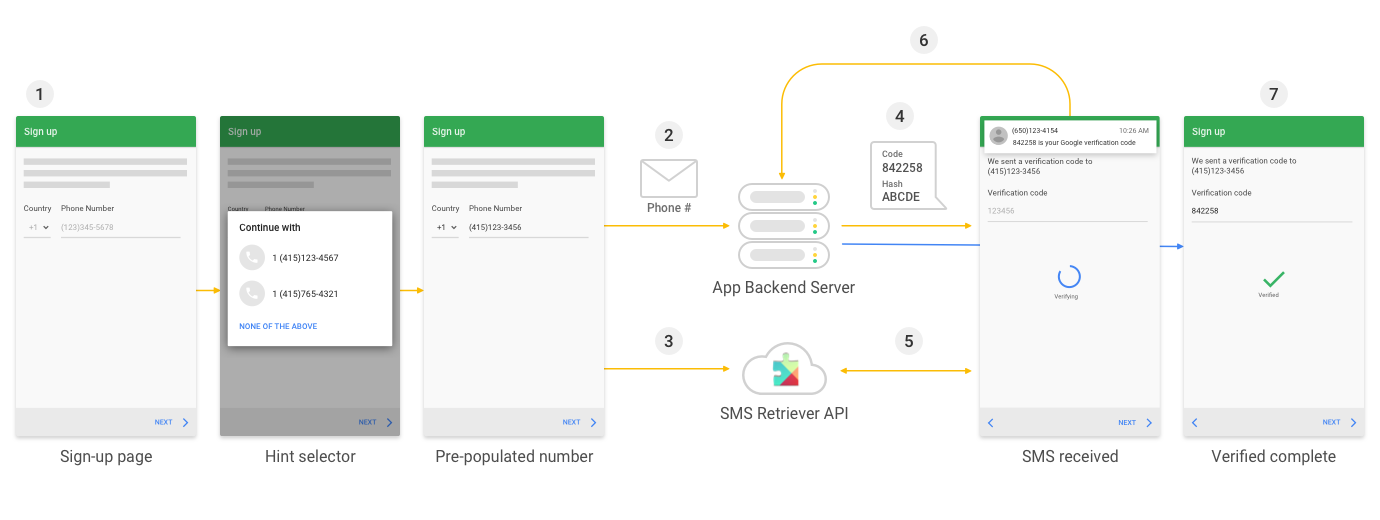SMS Retriever API を使用すると、ユーザーが手動で確認コードを入力しなくても、Android アプリ内で SMS ベースのユーザー確認を自動的に実行できます。アプリの権限の追加も必要ありません。アプリに自動 SMS 検証を実装すると、検証フローは次のようになります。
- ユーザーがアプリで SMS による確認を開始します。アプリは、電話番号の入力を求めるプロンプトを表示するか、Smart Lock for Passwords ヒントセレクタを使用して、ユーザー アカウントの作成にその情報が必要ない場合は、プロンプトを表示します。
- アプリは、ユーザーに電話番号を確認するようリクエストします。 ユーザー データベースで使用可能な情報に応じて、このリクエストにはユーザー ID、ユーザーの電話番号、またはその両方が含まれる場合があります。
- 同時に、アプリは SMS Retriever API を呼び出して、サーバーからの SMS レスポンスのリッスンを開始します。
- サーバーはユーザーに SMS メッセージを送信します。このメッセージには、サーバーに送信される 1 回限りのコードと、アプリを識別するハッシュが含まれています。
- ユーザーのデバイスが SMS メッセージを受信すると、Google Play 開発者サービスは、アプリのハッシュを使用してメッセージがアプリ向けかどうかを判断し、そのメッセージを SMS Retriever API を通じてアプリで利用できるようにします。
- アプリはメッセージ テキストのワンタイム コードを解析し、それをサーバーに送り返します。
- サーバーがアプリから 1 回限りのコードを受け取り、コードを検証し、ユーザーがアカウントの確認に成功したことを最終的に記録します。
自動 SMS 検証をアプリに実装する方法については、Android のガイドとサーバーガイドをご覧ください。

